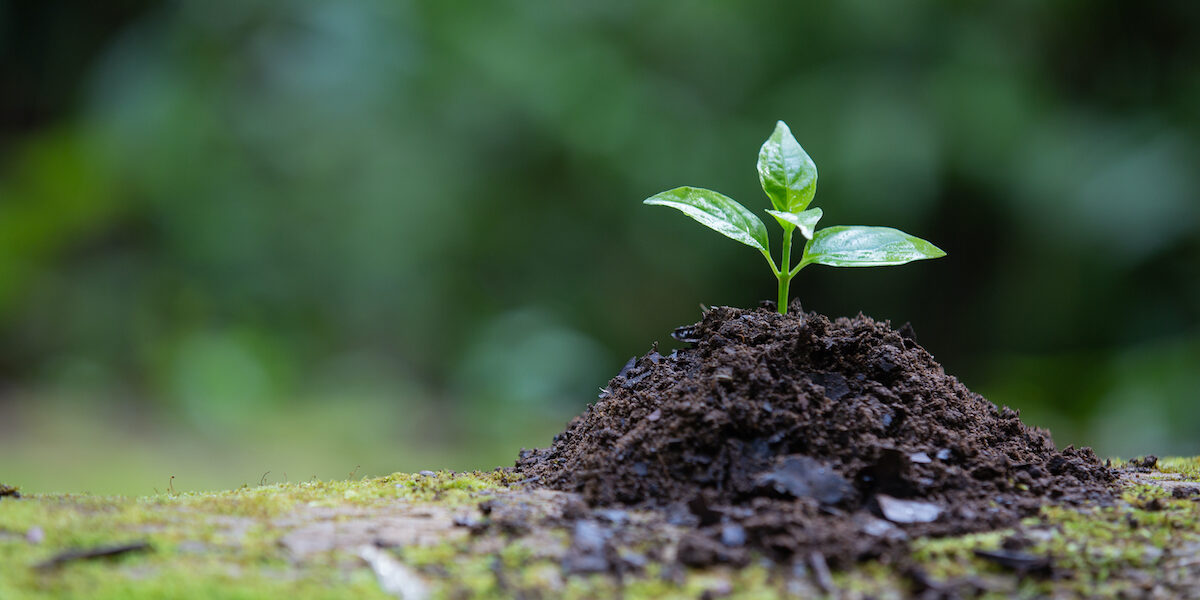
Biobased Plastics
Bio-based plastics are made entirely or partially from renewable raw materials. These can be both biodegradable and non-biodegradable. Bio-based plastics include, for example, PLA, cellulose or starch-based plastics, which are biodegradable. Green-PE, which is made from bio-alcohol, is one of the non-biodegradable bio-based plastics. Organic alcohol is obtained from sugar cane and is therefore only made from renewable raw materials.
Biobased Plastics
Bio-based plastics are made entirely or partially from renewable raw materials. These can be both biodegradable and non-biodegradable. Bio-based plastics include, for example, PLA, cellulose or starch-based plastics, which are biodegradable. Green-PE, which is made from bio-alcohol, is one of the non-biodegradable bio-based plastics. Organic alcohol is obtained from sugar cane and is therefore only made from renewable raw materials.
Biodegradable
In the case of biodegradability, substances are examined to determine whether they can be decomposed by microorganisms. Materials are called biodegradable if they are broken down by microorganisms or enzymes e.g. B. degraded in the ground.
Biodegradable
In the case of biodegradability, substances are examined to determine whether they can be decomposed by microorganisms. Materials are called biodegradable if they are broken down by microorganisms or enzymes e.g. B. degraded in the ground.
Home Compost
Disposal in your own garden (standard AS 5810) In cheap and environmentally friendly disposal With home composting, the waste in the container reaches a temperature that is only slightly higher than the outside temperature, and this is not always optimal composting conditions for a short period of time
Industrial Composting
In industrial composting, on the other hand, temperatures of 50 ° C with peaks between 60 and 70 °C are reached over several months always optimal conditions
Composting
Composting is a process in which organic waste e.g. Fruit can be transformed into valuable soil with the help of microorganisms. Compostable according to the European standard DIN EN 13432 (industrial compostable standard) is what ... a) is biodegradable under composting conditions b) disintegrates to at least 90% within a composting cycle c) has no toxic effect and does not release heavy metals in the compost beyond a certain limit d) has no negative impact on the composting process
PLA - Polylactid
PLA is a bioplastic that is made from sugar. PLA is a transparent bioplastic that can be processed using conventional thermoplastic processes such as deep-drawn trays or yoghurt cups. In addition, PLA is also available as roll goods or ready-made bags. PLA is food-safe and can therefore be used ideally in the food industry. The plastic PLA is biodegradable according to EN 13432. Since certain environmental conditions are required for the composting of PLA, it should be disposed of in industrial composting plants.
PLA - Polylactid
PLA is a bioplastic that is made from sugar. PLA is a transparent bioplastic that can be processed using conventional thermoplastic processes such as deep-drawn trays or yoghurt cups. In addition, PLA is also available as roll goods or ready-made bags. PLA is food-safe and can therefore be used ideally in the food industry. The plastic PLA is biodegradable according to EN 13432. Since certain environmental conditions are required for the composting of PLA, it should be disposed of in industrial composting plants.
Zellulose
The cellulose made from renewable raw materials is characterized by its high transparency. Made from wood fibers, which are also used for paper production, the bag can be composted. Since cellulose allows water vapor to pass through, it prevents condensation from forming inside. However, in order to achieve certain barrier properties, cellulose can also be coated. Cellular glass is particularly well suited for food because it is odorless and tasteless.
Zellulose
The cellulose made from renewable raw materials is characterized by its high transparency. Made from wood fibers, which are also used for paper production, the bag can be composted. Since cellulose allows water vapor to pass through, it prevents condensation from forming inside. However, in order to achieve certain barrier properties, cellulose can also be coated. Cellular glass is particularly well suited for food because it is odorless and tasteless.
Grass Paper
In the production of grass paper, grass with up to 30% (by volume) is used as a sustainable filler for production. Wood or waste paper and other fillers are usually used to manufacture paper.
Agricultural Paper
Agricultural paper is an environmentally friendly and wood-free alternative and is made from agricultural waste. Millions of tons of agricultural waste are generated every year. This high-quality raw material provides the ideal basis for sustainable paper.
Bio-PE
Bio-PE is not made from petroleum but from sugar cane. Bio-PE is recyclable and has comparable properties to LDPE film made from petroleum.
Norm EN13432
The EN13432 standard is certified by DIN CERTO; the standard tests the product for its compostability.
Norm EN13432
The EN13432 standard is certified by DIN CERTO; the standard tests the product for its compostability.
DIN CERTO
DIN CERTO is a certification company of the Tüv Rheinland Group and the certification body for issuing the DIN marks. DIN CERTO is an independent company that is allowed to issue standards in almost every industry. It is also accredited or recognized by independent domestic and foreign bodies in the legally regulated area.
DIN CERTO
DIN CERTO is a certification company of the Tüv Rheinland Group and the certification body for issuing the DIN marks. DIN CERTO is an independent company that is allowed to issue standards in almost every industry. It is also accredited or recognized by independent domestic and foreign bodies in the legally regulated area.
Starch-based raw materials (starch blends)
Corn, wheat, sugar beets and potatoes provide the largest share of starch production for film production.
Renewable raw materials
Renewable raw materials are organic raw materials that come from agriculture and forestry as well as from unused fields. Our products are largely based on starch and biopolymers, which are obtained from biological waste from agriculture.
Biopolymere
Biopolymers are made from renewable raw materials and are the basic building blocks for the production of compostable packaging.


